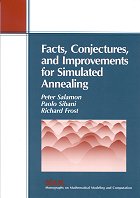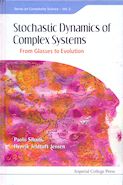The method described in this book operates by simulating the cooling of a (usually fictitious) physical system whose possible energies correspond to the values of the objective function being minimized. The analogy works because physical systems occupy only states with the lowest energy as the temperature is lowered to absolute zero.
This book is suitable for advanced undergraduate and graduate students and for professionals in a wide variety of subject areas: bioinformatics, chemistry, computer science, engineering, finance, geology, mathematics, and physics.

